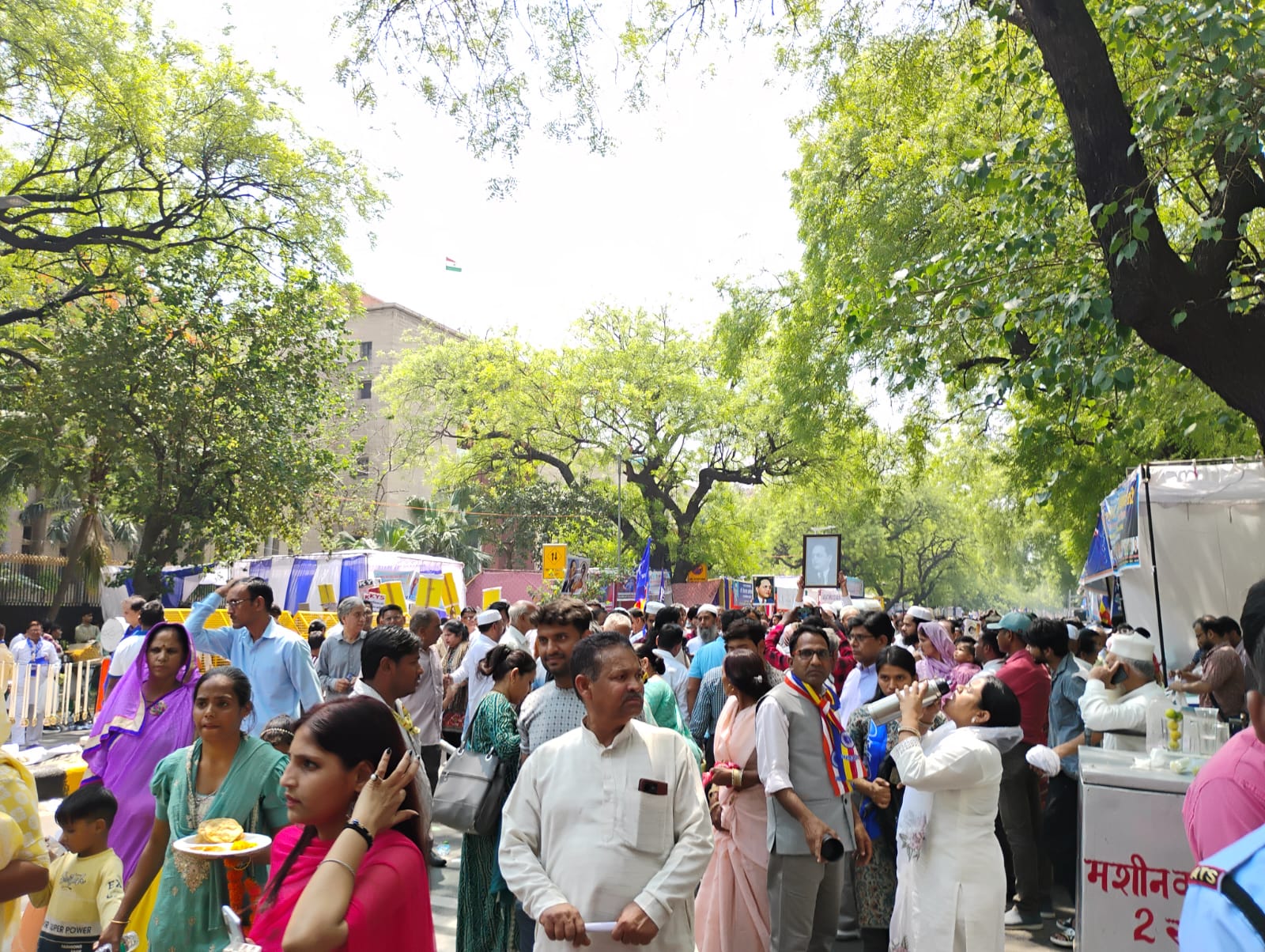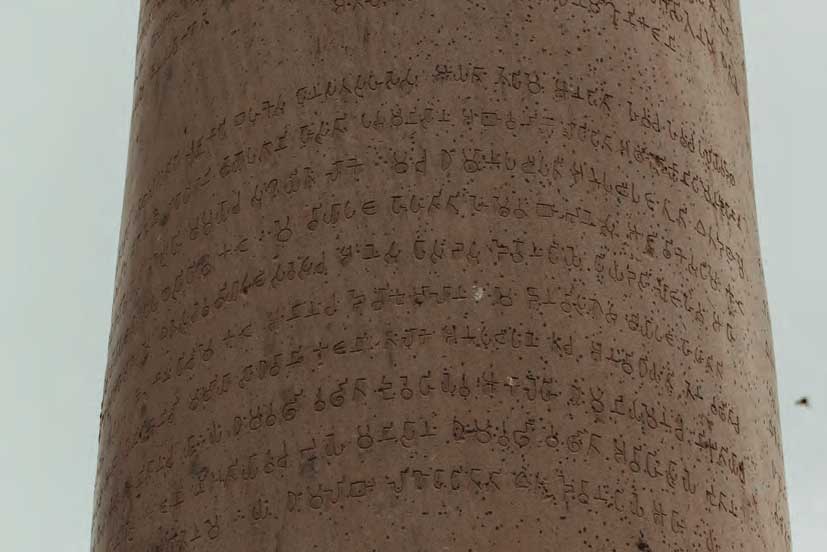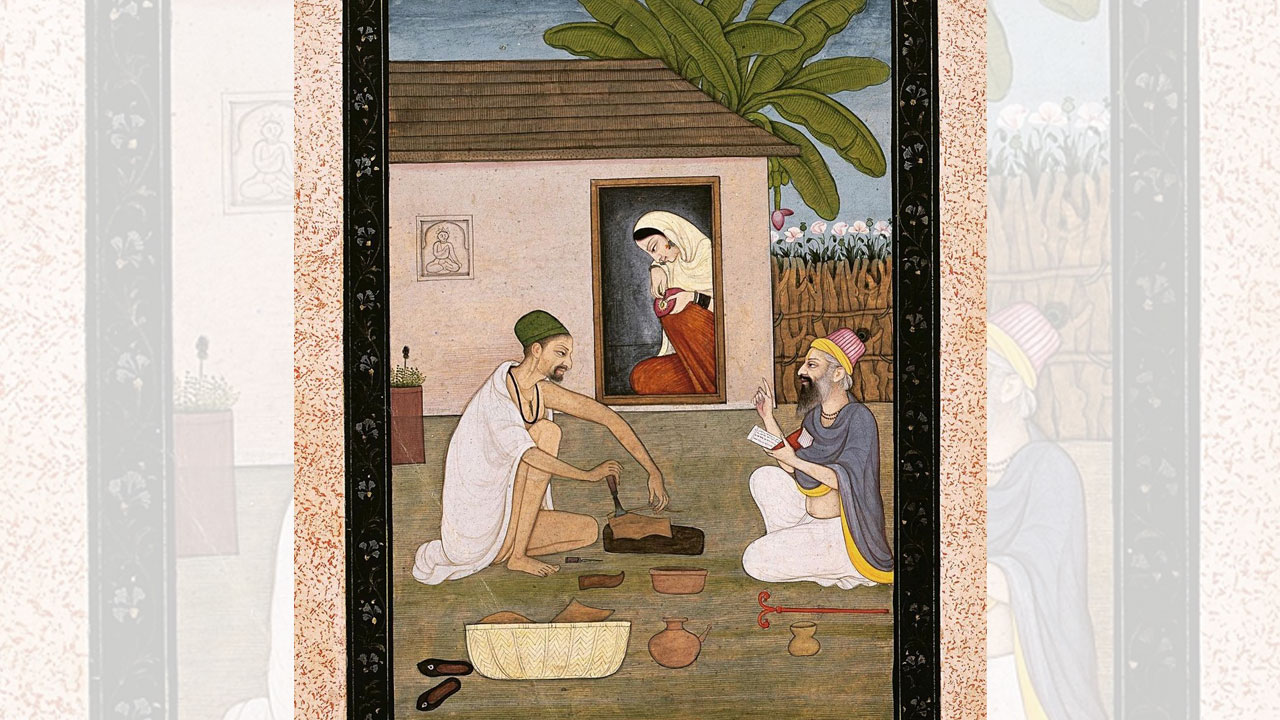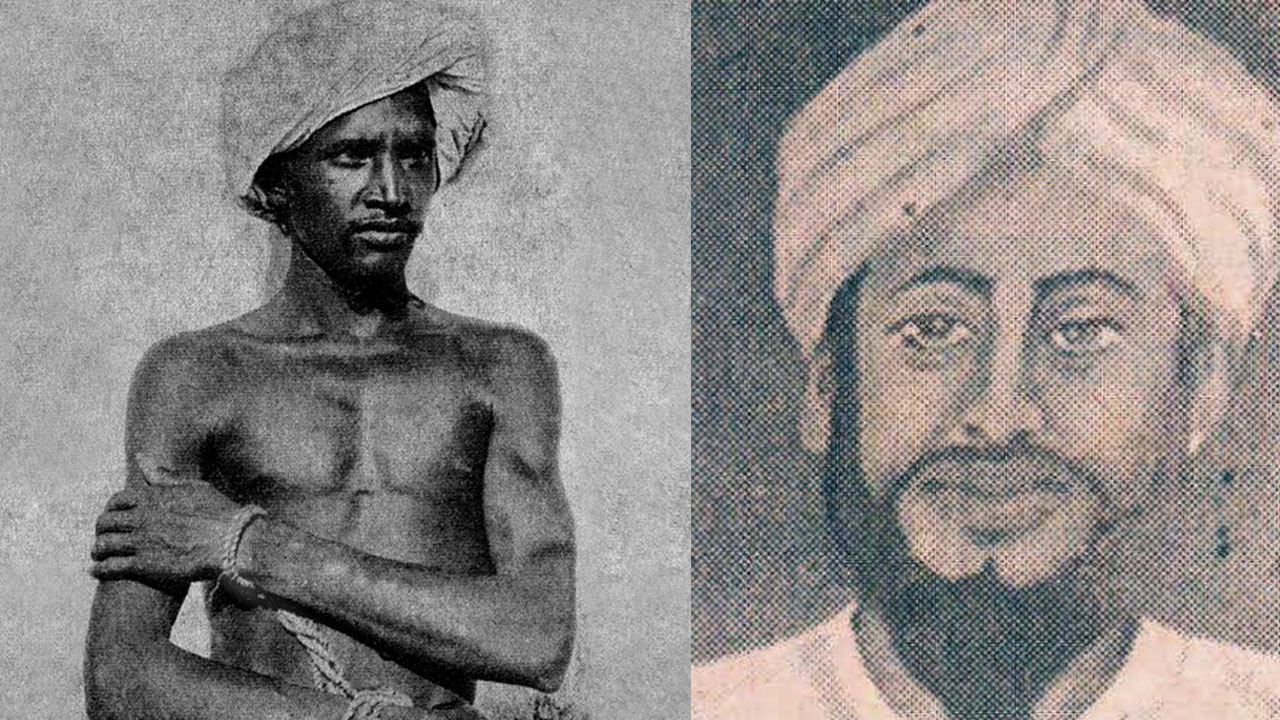On the anniversary of the publication of Gulamgiri (1 June 1873)
Where justice is denied, where poverty is enforced, where ignorance prevails, and where any one class is made to feel that society is in an organized conspiracy to oppress, rob, and degrade them, neither persons nor property will be safe. – Frederick Douglass
The wise say that finding the right questions is much more difficult than finding the right answers. Once you ask the right question, the answer will follow.
Two centuries ago, the socio-cultural exploitation of the Bahujans was much worse than it is now, yet one raised their voice against it. The Bahujans weren’t even aware that they were being exploited and questions about their wretched state never crossed their minds. They had learnt to live with exploitation and oppression. They were poor, miserable and helpless – they were the proletariat. They believed that things were as they should be. They did not have any complaints against society. But they did have complaints against the god that was thrust upon them by the Brahmins and which they erroneously believed was theirs, too. Amid the despondency and despair that enveloped their lives, they pinned all their hopes on the make-believe god, unaware that the religion and the god were parts of a grand conspiracy to keep them enslaved. This, despite the fact that all tasks involving back-breaking labour were assigned to them. Let alone wages, they did not get even enough grain to feed themselves in return for their toil. Many were condemned to “begar”(unpaid work) generation after generation.
The Communist Manifesto (1848), co-authored by Karl Marx (5 May 1818 – 14 March 1883), called upon the workers of the world to unite. But Shudras-Ati Shudras and the Touchables-Untouchables of India did not respond. They did not consider themselves workers but Lohars, Badhais, Chamars, Kumhars, Telis, Tamolis, Dhobis, Mallahs and so on.
In the same year, Jotirao Phule (11 April 1827 – 28 November 1890) became convinced that the lack of education was at the root of the problems of the Shudras-Atishudras and launched a campaign to educate them. He was 21 at the time. He began with one school and ended up with 18 in three years. Twenty-five years of his life were devoted to driving out the darkness of ignorance from the lives of the exploited. He berated the Brahmins for patronizing casteism and for promoting hypocrisy, sin, mumbo-jumbo and sorcery in the name of religion. He wrote, “The Brahmins have been using bogus scriptures to show that their privileges are divine.”

In 1855, he wrote a play Tritiya Ratna, which was an acerbic attack on the manipulations and the guile of the Brahmins. In 1869, he wrote Powada: Chhatrapati Shivaji Bhonsle Ka to arouse a feeling of self-respect among the low castes. The same year, Brahmanon Ki Chalaki and Powada: Shiksha Vibhag Ke Adhyapak Ka were published. The first was a commentary on brahmanical conspiracies and the second talked of the reluctance of the Brahmin teachers to teach Shudra and Atishudra students and of the corruption informing the education department. All these works, though important in themselves, only formed the backdrop of what was to follow.
It was the year 1873. The campaign to educate the Shudras-Atishudras had completed 25 years. The students who had graduated from Phule’s schools had entered social life. Their minds were liberated and they were unwilling to accept anything without questions and arguments. Phule felt that the time had come to launch a major movement against the cultural hegemony of the Brahmins. To break the stranglehold of caste on society it was imperative to introduce the Shudras-Atishudras to their glorious past. They needed to be told that the Brahmins had deftly used the Puranas, the epics and other religious scriptures to distort their history and culture. It was also necessary to reject the scriptures, customs, traditions and cultural symbols that had reduced them to the status of second- or third-class citizens. The Shudras-Atishudras needed to be convinced that their socio-economic emancipation would elude them until they break free from the intellectual and cultural dominance of the Brahmins. The concept of “cultural dominance” was pioneered by Karl Marx and expanded upon by Antonio Gramsci (22 January 1891-27 April 1937). Gramsci argued that cultural symbols, myths, etc are projected as the identity of the people to perpetuate intellectual slavery, which could be countered only by creating and developing a parallel culture. Phule had already done that through Gulamgiri four decades before Gramsci propounded his theory. In 1873, the year he published Gulamgiri, he also launched the Satyashodhak Samaj to give a sound footing to his thinking and work.
Slavery in the name of religion
Like The Communist Manifesto, Gulamgiri is also a thin booklet. Apparently, elaborate treatises are not required to change the world. If the intent is good, a few words can produce the needed effect. He dedicated Gulamgiri to the “good people of the United States [of America] as a token of admiration for their sublime, disinterested and self-sacrificing work in the cause of Negro slavery.” Gulamgiri has the same place in the history of the movement against cultural hegemony in India that The Communist Manifesto has in the history of the workers’ movement in the world. The book, written in Marathi, was priced at 12 annas but was made available at half the cover price to the poor and the Shudras-Atishudras. He wanted to ensure that lack of money did not come in the way of the poor, the Shudras-Atishudras wanting to read Gulamgiri.

Jacques Derrida (15 July 1930 – 9 October 2004) is considered the originator of the theory of deconstructionism. However, Phule had used this technique in Gulamgiri about a century before Derrida. Phule reinterpreted the mythological tales revered by the masses even when doubting the myths was considered blasphemy. He thus prepared the ground for building a parallel historical narrative.
That Brahmins were of foreign origin was not Phule’s original construct. Scholars like Max Muller, Vincent Smith and Thomas William Rhys Davids shared this view. Even a rightist author like Tilak subscribed to it. Phule presented Matsya, Varah, Kachh, Narsingha, Parshuram and other avatars of Vishnu as Aryan heroes and non-Aryan kings like Hiranyagarbha, Hiranyakashyap, Bali and Banasur – who were described as Rakshasas, Asurs, Daityas and Danavas in Puranas and religious scriptures – as valiant warriors and the original rulers of India. He portrayed Bali as an ideal, just and glorious ruler whose kingdom extended from the modern Konkan in Maharashtra to the area around Ayodhya and Kashi.
Brahmins also believed that the battles between the Devas and the Rakshasas were real. But their description of these conflicts is so fantastical that the rivals seem to be the denizens of another world. Phule “humanized” the conflict between the Aryans and the non-Aryans embedded in the mythological narratives. He rejected the narratives based on miracles and myths and introduced his readers to a new history, in which the events mentioned cannot be dated precisely but appear to be entirely plausible. It can well be called an attempt to replace one tale with another. The latter may not be true but is at least more humanitarian in its concerns and more logical.
The Indus Valley Civilization was yet to be discovered in Phule’s time. Archaeological excavations at Harappa were launched in 1920 under the leadership of Dayaram Sahni and in 1921 at Mohenjo-Daro under the leadership of Rakhaldas Banerjee. These excavations proved that a great urban civilization flourished in the Indus Valley thousands of years before the arrival of Aryans in India. The recently unearthed remains from Rakhigarhi, Haryana, one of the main centres of this civilization, amply prove that it was a non-Aryan civilization.
Also read: Read the story of Brahma, Bishnu and Mahesh in Phule’s words
Like many of the books of that period, Gulamgiri was also written in the form of a dialogue. One of the interlocutors is the author himself and the other is Dhondirao. The preface begins with a quote from the great Greek poet Homer: “The day that reduces a man to slavery takes from him the half of his virtue.”

Phule draws up the contours of the ancient Indian history on the basis of the concept of Dashavatar (en incarnations of Vishnu) elucidated in the Hindu scriptures, punctuating the account with descriptions of brahmanical conspiracies, cunning and assertions which have no relation whatsoever with truth and reality. For instance, this comment on Matsyavatar. According to the Bhagwa Purana, Matsyavatar was born of a fish. Phule writes, “Now if at all there was a human baby in one of the [fish] eggs and she [the fish] did bring the egg out of water to break it open and allow the human baby to emerge, how did she survive out of the water? Or if she broke the egg in the water itself, how did the human baby survive inside water?” It is not that no one before Phule had commented on this and other nonsensical tales with which Hindu scriptures are replete. In ancient India, Makkhali Gosala, Charvak and others had made fun of the scriptures for peddling such unbelievable stories. But it required some courage to talk about such things in 19th-century India and that too in a book.
The first chapter of the book is on Brahma, Saraswati and Aryans. According to the Purush Sukta of the Rig Veda and Manusmriti, the Brahmins were born from the mouth of Brahma. Phule writes that the myth of Brahma was created by the Brahmins to prove that they were the best and the head of society. He writes, “Leaders like Manu followed Brahma. They were afraid that the rules made by Brahma would be violated. So they composed and spread several strange myths about Brahma. They wanted the slaves to believe that whatever had happened was divinely ordained.” In the second chapter, he pits non-Aryan warrior Shankhasur against Matsyavatar. According to Phule, Matsya was the captain of an Aryan horde, who defeated and killed Shankhasur and usurped his kingdom. When Matsya died, the followers of Shankhasur launched a fierce attack on the Matsya horde, forcing the latter to take to their heels. The third chapter is about Kachhap. After Matsya, another Aryan horde entered India, which was led by Kachhap, who again conquered Shankashur’s kingdom. Then came the Kashyap-led horde of Aryans. The defeated original inhabitants of India allied with Kashyap. A battle between Kachhap and Kashyap followed. In the subsequent chapters he talks about the other avatars like Varah, Hiranyagarbh, Narasimha and Vaman and pits them against ancient non-Aryan warriors. In the sixth chapter, he talks with great reverence about Baliraja, a leading non-Aryan emperor.
Caste discourse in Gulamgiri
In the seventh chapter of Gulamgiri, Phule turns to the creation of castes. He contends that the Mahar caste got its name from “Mahaari”. In the following chapter, he talks about Parshuram, who “began the custom of calling those great mahaari kshatriyas by such insulting names as atishudra, mahar, antyaj, mang and chandal …” To what extent Phule’s theories regarding the origin of castes can be accepted is not the issue. What is important is to know that the mythological narratives on which the Brahmins based their claims of superiority do not lend themselves to any definite and acceptable interpretation. Phule rejects both the mythological concept of ‘Parampurush’ and the theory of Chaturvarnya. In the course of his analysis, he appears indecent and rather too aggressive at places. Vishnushastri Chiplunkar has criticized him for “venturing into an area which belonged solely to the linguists”. Had Phule written Gulamgiri in a state of impatience and mental turmoil? If we examine Gulamgiri in the context of the efforts made by Phule for reforming society we can, to some extent, decipher the reason for his bitterness. Just imagine a 21-year-old taking to public life fired by the desire to transform society. He works consistently and tirelessly to that end for 25 years. But then he finds that no one really cares about the Shudras. His pain can be gauged from an abhang he penned around the time he wrote Gulamgiri. In that abhang, he describes the misery of a farmer.
Roughly translated, the abhang says, “His clothes are dirty and soiled, he is semi-naked, wearing rags for a headgear, he has to eat porridge of jawar, our farmers get no happiness.”
Phule has himself hinted at the significance of Gulamgiri in the introduction: “… it is very essential for human beings to be free. When man is free, he can clearly convey his thoughts to people through writing or speech. But if he does not have freedom, then he is unable to communicate his thoughts, however beneficial they might be to the others, and consequently, they just evaporate into thin air.”
(Translation: Amrish Herdenia; copy-editing: Anil)





